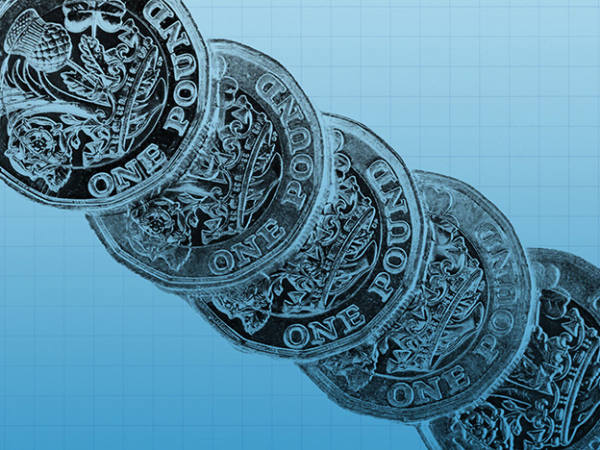- Long-term investors should always look to beat inflation
- Adjusting your portfolio to address this can make sense, but you should not make constant changes or completely sell out of assets on the basis of short-term data
In November, UK consumer price index (CPI) inflation hit a 10-year high of 5.1 per cent and is predicted to increase further. But if you are saving for retirement you should be mindful of inflation even when it is not at record levels. “Long-term investors should always consider inflation as the first base target to beat,” says Jason Hollands, managing director at wealth manager Tilney.
Michael Lapham, director of financial planning at Mercer & Hole, adds that as your pensions and retirement investments are probably your longest-term savings plans you should always look to maximise their returns unless you are within 10 years of drawing from them.
So, while you should have a portion of your overall assets in cash as an emergency fund, maybe equivalent to around six months of your income to cover emergencies such as a period out of work, you should not have too much and not hold it in your retirement accounts. Hollands says that he has seen investors hold large cash balances in their self-invested personal pensions (Sipps) for reasons including not being sure where to invest, having just sold a holding or waiting for markets to fall. “There is a lot of ‘lazy money’ not earning interest and real value is being eaten away,” he says
Cash acts as a drag in rising markets and could ultimately mean a smaller asset value from which to draw when you retire (see this week’s portfolio clinic on pp20-21 for more on this). Trying to time markets, meanwhile, is particularly risky because they might not go down for some time, meaning that your money is sitting idle for a long time when it could have been invested. And it is next to impossible to predict the bottom of the market.
There are some valid reasons to hold substantial amounts of cash in your pension, though, for example if you are planning to buy an annuity in the near future or are about to take your tax-free lump sum.
Government and some corporate bonds currently have negative or low yields, so a higher weighting to these in your retirement funds is also not a good idea if you have many years until retirement. One reason for holding government bonds is to smooth short-term volatility, so if you are a long-term investor, they are probably not necessary. “Think about reducing your allocations to these in favour of assets such as equities and infrastructure,” says Hollands.
Inflation also has an impact on equity holdings, so it could make sense to adjust your holdings in these. Hollands says that growth shares have had a strong run because they have benefited from ultra-low borrowing costs and benign inflation. Funds with US exposure, in particular, are likely to have considerable exposure to tech stocks.
“Growth prices off discounted cash flow models – tech company shares are valued today on future earnings streams, but inflation creates uncertainty on these,” he explains – a reason why tech stocks have recently sold off.
If you are heavily exposed to areas such as tech stocks and the US, he suggests taking a more balanced approach. Areas to which you could add include financials, because these can do well when borrowing costs are rising. Options for exposure to these include Jupiter Financial Opportunities Fund (GB00B5LG4657), which you can read more on in our Fund ideas of the year (IC, 7 January 2022).
Other areas that can do well when inflation is high and/or rising are industrials, which can pass on costs to customers, and commodity stocks, as some investors turn to real assets such as gold to hedge against inflation. And with dividend-paying companies you get a dividend today rather than betting on the prospect of growth, which might not happen. Hollands also suggests that the companies you add exposure to have strong balance sheets and are not overly leveraged as these are more inflation-resilient.
He adds that the UK equity market is a good area in which to find financials, commodities and dividend payers. Funds that offer exposure to these areas include Artemis UK Select (GB00B2PLJG05), which had over a third of its assets in financials at the end of November, with top holdings including Barclays (BARC). Jupiter UK Special Situations (GB00B4KL9F89), meanwhile, had about 20.2 per cent in financials and 9.1 per cent in energy at the end of November. Its largest holdings included BP (BP.) and Standard Chartered (STAN).
Measured approach
But don't make knee-jerk reactions to rising inflation. “Very aggressive short-term calls can backfire, so don’t ditch all your exposure to growth stocks,” warns Hollands. “Instead, create a more balanced approach. People’s portfolios can become unbalanced because they chased past performance, so trim what has done well and reallocate to laggards – such as the UK.”
More generally, don't forget your long-term goals and get blown off course from your personal objectives or time horizon by current economic data if you are a medium- or long-term investor. Tilt your portfolios appropriately rather than aggressively selling out of assets wholesale as there is no guarantee that equity returns will beat inflation.
“There will be periods of high inflation as you go through life and if you make investment changes every time this happens you could end up making several changes, which will incur fees, and your returns could be impacted negatively,” says Helen Morrissey, senior pensions and retirement analyst at Hargreaves Lansdown. “Over time, you need to look at how you can increase contributions, or assess whether your investment strategy remains well-diversified and still meets your needs. But this should be done as part of a long-term strategy – not in response to something that could be short-term. It is best to review your pensions regularly throughout your working life to make sure you remain on track to meet your expectations.”
Retirement and drawdown
If you are retired and drawing from your retirement savings it is always very important not to draw them too quickly. And during times of higher inflation, if you take more than normal to cover higher expenditure and it comes from capital as well as income paid by your investments, you will reduce the base of assets that generate your income.
“If you are considering withdrawing more than usual to cope with rising living costs, check whether your new withdrawal rate is sustainable,” says Becky O’Connor, head of pensions and savings at interactive investor. “You don’t need to keep withdrawing the same amount from your pension every year, and many people need less as they get older.”
“Being prudent and not taking too much money in good times gives you more flexibility when things are more challenging,” adds Morrissey. “A general rule of thumb for drawdown is approximately 3.5 per cent to 4 per cent a year as a sustainable level of income, but there will be times when this amount needs to be tweaked depending on circumstances.”
Asset allocation is important, regardless of inflation, because you need your asset base to cover the rest of your retirement, so Lapham warns against going ‘ultra cautious’. You need adequate exposure to assets that can grow and outpace inflation, such as equities, and he suggests diversifying between different assets and geographies.
A suitable asset allocation in income drawdown is different for each investor. But as a general example, someone who is newly retired could consider an allocation of around 60 per cent in equities. The remaining amount could be invested in areas including alternative assets such as infrastructure and absolute return funds, and maybe some bond funds. Inflation-linked bond funds, for example, can help to offset this risk, but when inflation is already high this is reflected in their prices. So it is better to add these when inflation isn’t high and they are cheaper. Also see How much should you allocate to alternative investments? (IC, 10 December 2021).
Lapham says that one strategy is to have different pots of money for the short, medium and long term, allocated accordingly. Money needed in the next three years could be in cash. Money needed in five to 10 years could be invested in a moderately cautious way, so equally split between bonds and equities, or allocated to equities, bonds and asset-backed investments such as property. But exactly how much you allocate to each area varies according to your personal circumstances and requirements, and he adds that “if you don’t need to take more risk to meet your objectives why do it?”
Lapham suggests focusing money not needed for 10 years or more on equities.










